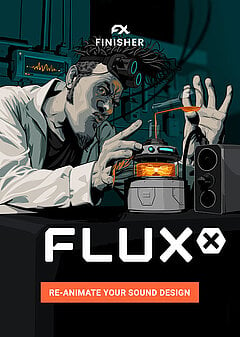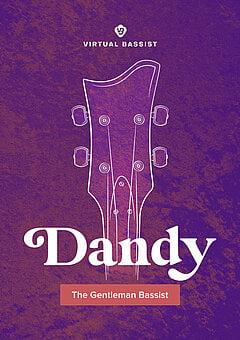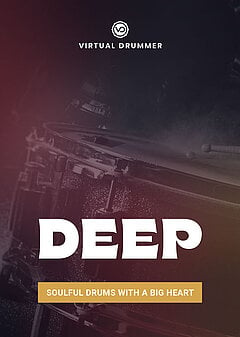5 Ways to Level Up Your Music Production Skills
How to break through creative plateaus and boost your production skills by leaps and bounds
SEPTEMBER 5TH, 2021
You should find plenty of value in this article at any stage of your production career, but it will be most relevant if you consider yourself to be at least at an intermediate level — if you’re new to music production, check out our article, The 5 Basics of Music Production to get up and running faster!
Collaborating with other producers
This one may seem obvious, but there are specific things you’ll want to do to make sure you get the most mileage out of each collaboration. Number one is to collaborate with someone who has some overlap with you stylistically, but in a different subgenre or even an entirely different genre. You want a compatible but new fanbase, but the collaboration should challenge you to work outside of your comfort zone. If you’re great at dubstep, try finding a producer in a different genre, such as hip hop — then add your heavy bass design skills and drops to the song you create together. Bring your uniqueness, but apply it in a different context and create something neither of you could separately!
Another tip: note your partner’s approaches to songwriting, sound design, production, and any other areas you can think of. Do any of them surprise, impress or frustrate you? Start applying that info to your own tracks immediately (or identifying what you’re now certain you never want to try!). You’ll never have all the answers, and the person you’re working with probably has years of trial and error figuring out what they like that was completely different from yours — use the lessons they’ve already learned, and be sure to share your own with them, no matter how new you still feel to production. If you’re actively learning and improving, there’s likely to be something you do differently that can help them too.
Produce a song in a completely different genre
Building a repeatable process for producing new music is invaluable, but one of the best ways to improve that process is to completely switch things up with a new style or genre. Whether you release the song under your artist name is up to you, but the important part is resetting yourself and getting out of a rut. If you create EDM, try metal; if you make hip hop, try orchestral; if you create acoustic rock, try industrial! The further away from your normal style and routine, the better.
Don’t worry about creating a masterpiece — your first foray into a new style probably won’t sound great, and that’s totally fine. Focus on finishing it, preferably in 1 or 2 sittings; speed is key so you don’t get sidetracked for days. Quickly write, produce, mix and master, then take notes on what you needed to do to create a song in this genre — the mix will likely require different treatment than you’re used to, so it helps to have a few reference tracks to navigate the differences. Did you have to dial back your compressor settings? Add way more distortion? Use bigger or smaller reverbs than usual? Create a different frequency balance and arrangement?
If you do this quickly and efficiently, you’ll typically begin questioning why you’ve been doing things certain ways — great! That’s the entire purpose of this exercise. It exposes tendencies that are currently holding back your production quality and speed, and is a strong step toward becoming more creative. Not everything in this new genre will serve you (some mixing approaches won’t translate, etc.), but the critical thinking involved will instantly make you a more flexible and effective producer.
Deep diving into your favorite synths / the ones you use most
If you use the same synth all the time, this will help massively. It’s easy to fall into the trap of manipulating presets and using the same effects all the time — but while those can be helpful time-savers in the short term, defaulting to the same options does little to nothing for your creativity and speed. The solution is getting to know your synth inside and out, and there are a few ways to do it.
One of the most fun methods is to pull up a preset that fascinates you and pick it apart piece by piece. What happens when you disable the filter, distortion, or any other effect? Continuing testing each point in the signal chain until you strip the preset down to its fundamental waveforms, samples or other base settings. If there’s barely any difference, take note of those initial settings and move on. However, if the difference is night and day, bring the effects and settings back in one at a time and tweak their parameters so you can understand what’s going on at a deeper level. If you’re feeling ambitious at the end, initialize the synth and see if you can build that preset from scratch without looking at the original. This forces you to recall the theory behind its construction and will help you reproduce similar sounds on command!
Which leads into the next method...
Pushing every effect to extremes (to better understand what they do)
If you’ve recently acquired a new plugin or want to learn an old one more deeply, systematically go through every parameter and push it to its max level (always use a safety limiter when you do this, and protect your ears!). It can be difficult to identify the function of different knobs and faders, especially if you’re still learning about different audio effects (in this case, check out The Ultimate Guide to Audio Effects) or the plugin in question gives creative rather than functional names to its parameters.
Also, use the plugin for purposes which might sound like a bad idea at first. For example, Finisher RETRO’s Organizer preset to add aggressive distortion to strings, or recording a bassline with Virtual Bassist DANDY and adding a long delay to it. Most of the time, nothing specific will come out of this; it’s the experimentation that’s important, and when you find a gem you can simply make a note for later.
This is even a driving force behind certain subgenres of EDM — riddim basses are largely based around taking a more conventional growl or one shot and adding a super short delay with a ton of feedback. Without using effects the ‘wrong’ way, the world may never hear some incredible sounds waiting to be discovered. Plus, the more you try, the greater the chances you’ll strike gold!
Switch to only stock plugins for a song
It’s easy to get used to using the same synths or virtual instruments across nearly every song you produce — but while that improves your skill level with one virtual instrument, it doesn’t always translate to others. Every so often, ditch all 3rd party instruments (and audio effects too if you’re feeling bold) and use only stock plugins to create a song. It’ll be frustrating, laborious and painful — but when you move onto your next song, you’ll have a newfound appreciation for your favorite tools and will probably use them differently. You won’t have to rely on them as heavily, enabling you to produce songs more rapidly and appreciate your tools for their distinct features.
For example, if you often use one of UJAM’s Finishers to add creative effects to your mix, try only using stock effects next time. For FLUXX, that might mean changing together several delays, distortion, rendering and pitch shifting amongst many other effects. This will help you better understand what the plugin is doing so you can confidently use it in a variety of new and different contexts. The more you do this, the more you’ll find your brain automatically spits out creative ideas using your tools before you even sit down to produce a new song. Inspiration quickly ceases to become a problem, because you get it in long before you need it (which can be both a blessing and a curse when ideas start coming to you in the middle of the night!).
Wrapping up
This is by no means an exhaustive list, of course, but if you feel like you’ve plateaued, these are excellent methods to shake things up and kickstart your creativity. Growth occurs most rapidly when you’re applying your skills to different settings, which is why you should aim to produce in different styles and genres from time to time — and knowing your tools better will allow your brain to come up with more ideas since it has a larger number of reference points. The more tools you do this for, the easier music production will become as a whole; just be sure to dive completely into one tool at a time rather than jumping around. That would defeat the point!
Combine all this with occasionally stripping away your most trusted plugins, and you’ll quickly understand a plethora of concepts on a much deeper level, helping you to use them more effectively and create better music overall! There’s no need to do any of these 5 excessively — they’re best used as seasonings in your creative process to help push you to the next level, not as a distraction from creating the music you’re naturally drawn to. Have fun, push yourself to go beyond your current skill set, and keep improving at producing music you love!
Stay up to date
Sign up and we’ll send you an e-mail with product news and helpful stuff every now and then. You may unsubscribe at any time.
Defy Limits
We develop software solutions that enable people to create, consume and interact with music.





